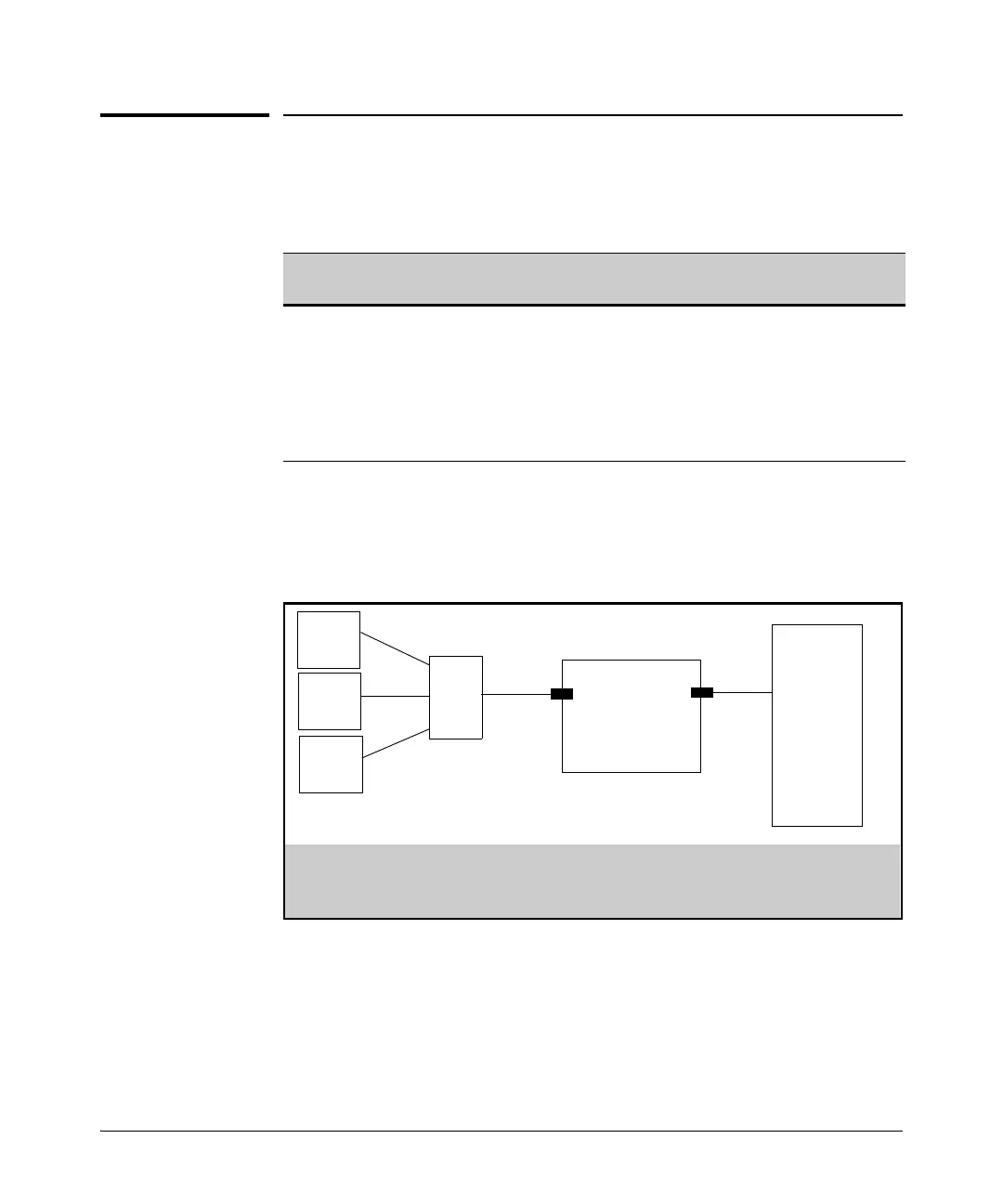12-3
Traffic/Security Filters and Monitors
Filter Types and Operation
Filter Types and Operation
Table 12-1. Filter Types and Criteria
Source-Port Filters
This filter type enables the switch to forward or drop traffic from all end nodes
on the indicated source-port to specific destination ports.
Figure 12-1. Example of a Source-Port Filter Application
Operating Rules for Source-Port Filters
■ You can configure one source-port filter for each physical port and
port trunk on the switch. (Refer to the filter command on page 12-17.)
Static Filter
Type
Selection Criteria
Source-Port Inbound traffic from a designated, physical source-port will be forwarded or
dropped on a per-port (destination) basis.
Multicast Inbound traffic having a specified multicast MAC address will be forwarded to
outbound ports (the default) or dropped on a per-port (destination) basis.
Protocol Inbound traffic having the selected frame (protocol) type will be forwarded or
dropped on a per-port (destination) basis.
End
Node
“A”
Server
Switch E8212zl
Configured for
Source-Port
Filtering
Hub
End
Node
“B”
End
Node
“C”
Port
1
Port
2
Configuring a source-port filter to drop traffic received on port 1 with an outbound destination of port
2 means that End Nodes A, B, and C cannot send traffic to the server. To block traffic in the opposite
direction, you would also configure a source-port filter to drop traffic received on port 2 with an
outbound destination of port 1.
